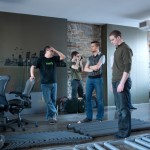-
-
recent posts
archives
- July 2015
- December 2013
- November 2013
- August 2013
- April 2013
- February 2013
- December 2012
- November 2012
- October 2012
- August 2012
- June 2012
- May 2012
- January 2012
- November 2011
- October 2011
- June 2011
- May 2011
- April 2011
- March 2011
- June 2010
- March 2010
- February 2010
- December 2009
- November 2009
- October 2009
- April 2009
- August 2008
categories
- Capital Markets
- Commercial Real Estate
- Completed Transactions
- Economic Recovery
- Innovation
- Landlord Financial Issues
- Lease Renewals
- Loan Delinquencies
- Macro Economy
- Market Statistics
- Misc.
- Never Be Defeated
- New Lease
- Press
- SQUARE FEET
- Sublease
- Sustainability
- Tenant Representation
- Uncategorized
- Workplace Strategy
-
WHEN IT COMES TO YOUR OFFICE SPACE, IS IT REALLY BEST TO JUST “STAY PUT”?
 In the last few years we’ve helped our clients renew their office leases more often than we’ve helped them acquire new office leases. Why, you ask? Some of our clients have thought it too risky to move to another location and commit to a longer lease, complete a full interior build out, and interrupt their business operations; others have simply opted for the path of least resistance at a time of great uncertainty about the future. Some have found themselves with reduced credit capacity, which has made acquiring new office space and posting a Letter of Credit difficult or impossible. Others have simply not had the mental capacity or human capital to think long term about their business, brand, and talent needs.
In the last few years we’ve helped our clients renew their office leases more often than we’ve helped them acquire new office leases. Why, you ask? Some of our clients have thought it too risky to move to another location and commit to a longer lease, complete a full interior build out, and interrupt their business operations; others have simply opted for the path of least resistance at a time of great uncertainty about the future. Some have found themselves with reduced credit capacity, which has made acquiring new office space and posting a Letter of Credit difficult or impossible. Others have simply not had the mental capacity or human capital to think long term about their business, brand, and talent needs.
BUT, IT’S EASY.
The landlord has made these types of transactions relatively easy and attractive to these tenants by crafting, in partnership with the tenant’s professional, “blend and extend” solutions. “Blend and extend,” as it’s known in the office leasing market, is the name given to the process by which a landlord renews a tenant with unexpired term on their lease by blending the unexpired term with the new term. The tenant is happy because they don’t have to go through the process of a new office search, a lease negotiation, and a move. The landlord is happy because there is no downtime, no marketing effort, and no exposure or risk if the landlord is trying to refinance their building or market it for sale. It’s easy and both tenants and landlords like easy.
THERE IS MORE TO IT.
Regardless of what a  tenant thinks is the best scenario–stay put or move–both options, renewing or relocating, must be evaluated side-by-side in a transparent way. The ability for a tenant to rethink their office layout and workflow or working adjacencies often allows efficiencies to be gained that can trump the initial economic offering or improve the landlord’s economic offer through a reduced footprint. Not to mention the not-so-obvious benefits that can be associated with moving, such as rebranding, creating a more convenient location for a specific sector or talent a business is trying to acquire, and energizing the team. Repeatedly, we’ve seen final deal structures of one building, deemed too expensive at the outset of the search, come out the winning option at the end of the process because of the tenant’s ability to take less space in one building than they would take in their existing space. With a renewed sense of hope in the economy, many of our clients are not only looking for good economic value in their leasehold, but also are beginning to look at how their office space will support their future growth, energize their brand, reposition them in the market place and/or allow them to capture market share or talent from competitors in a weakened condition. In other words, tenants are beginning to come out from under the “recession rock” and plan for future growth and market position of their organization.
tenant thinks is the best scenario–stay put or move–both options, renewing or relocating, must be evaluated side-by-side in a transparent way. The ability for a tenant to rethink their office layout and workflow or working adjacencies often allows efficiencies to be gained that can trump the initial economic offering or improve the landlord’s economic offer through a reduced footprint. Not to mention the not-so-obvious benefits that can be associated with moving, such as rebranding, creating a more convenient location for a specific sector or talent a business is trying to acquire, and energizing the team. Repeatedly, we’ve seen final deal structures of one building, deemed too expensive at the outset of the search, come out the winning option at the end of the process because of the tenant’s ability to take less space in one building than they would take in their existing space. With a renewed sense of hope in the economy, many of our clients are not only looking for good economic value in their leasehold, but also are beginning to look at how their office space will support their future growth, energize their brand, reposition them in the market place and/or allow them to capture market share or talent from competitors in a weakened condition. In other words, tenants are beginning to come out from under the “recession rock” and plan for future growth and market position of their organization.
I CAN’T BE BOTHERED.
Some may argue  that moving is a hassle. It takes some extra time and effort, and your current landlord may be willing to give you, what looks like on the surface, an appealing deal if you stay in place with them. However, with the right professional helping you sort through the myriad options available and assisting you to identify, interview, and select vendors to complete most of the heavy lifting, the process–whether you opt for a move or stay in place end game–should be easy and seamless. Moving offices may not be the best option for every company but certainly needs to be one of the options considered by your real estate professional regardless of whether your initial reaction is simply to stay in place.
that moving is a hassle. It takes some extra time and effort, and your current landlord may be willing to give you, what looks like on the surface, an appealing deal if you stay in place with them. However, with the right professional helping you sort through the myriad options available and assisting you to identify, interview, and select vendors to complete most of the heavy lifting, the process–whether you opt for a move or stay in place end game–should be easy and seamless. Moving offices may not be the best option for every company but certainly needs to be one of the options considered by your real estate professional regardless of whether your initial reaction is simply to stay in place.
MY BEST ADVICE?
Use your real estate professional to prepare and evaluate all scenarios in a transparent and easy-to-digest method. Consider not only the high-level economics of each scenario but also space adjacencies, technology, and furniture costs, access to new talent, the ability to retain current talent, your brand and image, and how each scenario contributes to energizing your operations and assisting you to reach your quantitative, qualitative and operational goals. Figuring out which scenario is best for your company in the coming years does not mean finding which is the easiest path to take. In the long run, operational productivity will earn you more profit than saving a few dollars on your lease or providing you an easier up-front process.
 So, go ahead and take control of your company’s real estate. When leveraged correctly, it can be a substantial aid to your company’s success.
So, go ahead and take control of your company’s real estate. When leveraged correctly, it can be a substantial aid to your company’s success.

